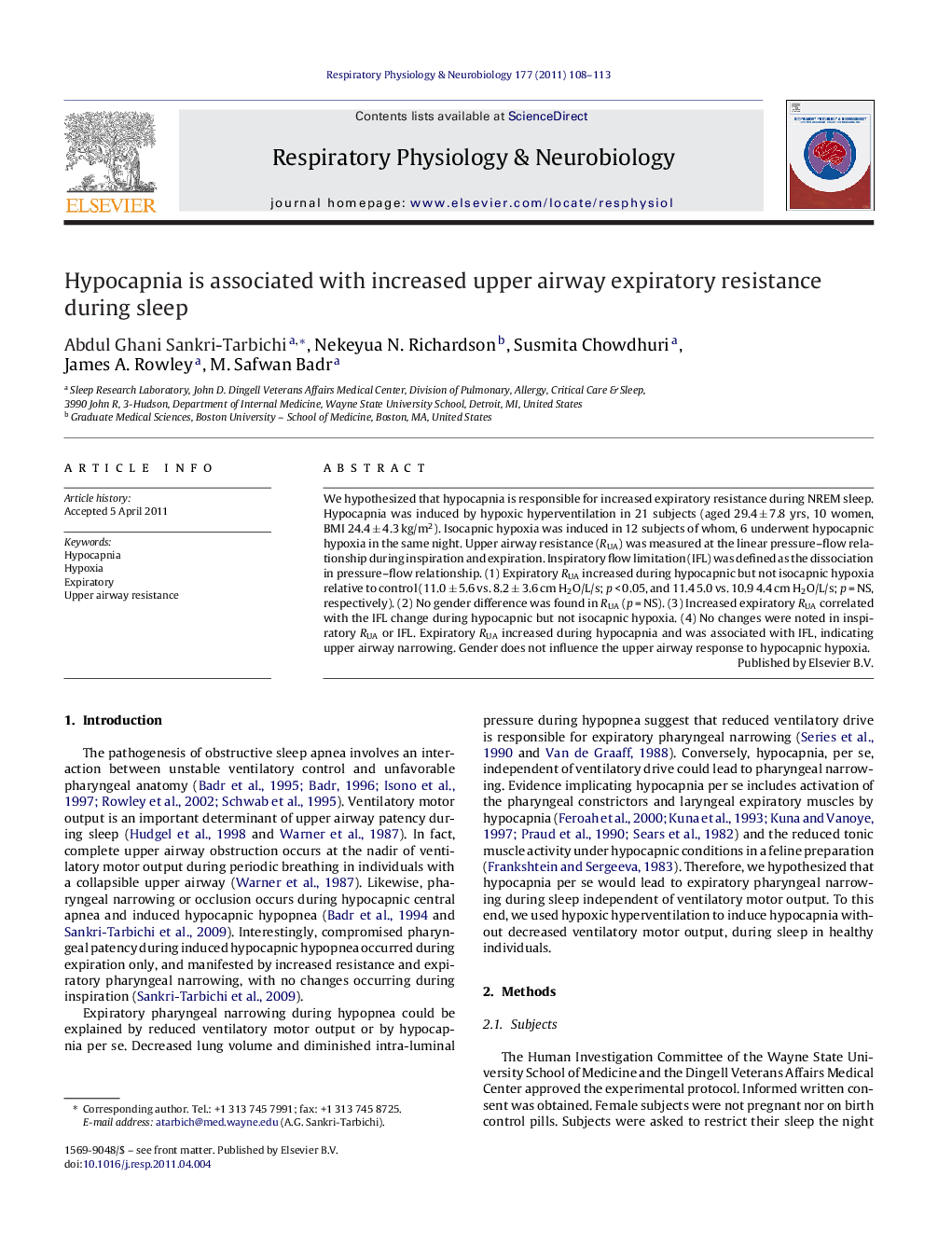| Article ID | Journal | Published Year | Pages | File Type |
|---|---|---|---|---|
| 5926521 | Respiratory Physiology & Neurobiology | 2011 | 6 Pages |
We hypothesized that hypocapnia is responsible for increased expiratory resistance during NREM sleep. Hypocapnia was induced by hypoxic hyperventilation in 21 subjects (aged 29.4 ± 7.8 yrs, 10 women, BMI 24.4 ± 4.3 kg/m2). Isocapnic hypoxia was induced in 12 subjects of whom, 6 underwent hypocapnic hypoxia in the same night. Upper airway resistance (RUA) was measured at the linear pressure-flow relationship during inspiration and expiration. Inspiratory flow limitation (IFL) was defined as the dissociation in pressure-flow relationship. (1) Expiratory RUA increased during hypocapnic but not isocapnic hypoxia relative to control (11.0 ± 5.6 vs. 8.2 ± 3.6 cm H2O/L/s; p < 0.05, and 11.4 5.0 vs. 10.9 4.4 cm H2O/L/s; p = NS, respectively). (2) No gender difference was found in RUA (p = NS). (3) Increased expiratory RUA correlated with the IFL change during hypocapnic but not isocapnic hypoxia. (4) No changes were noted in inspiratory RUA or IFL. Expiratory RUA increased during hypocapnia and was associated with IFL, indicating upper airway narrowing. Gender does not influence the upper airway response to hypocapnic hypoxia.
